Rubber 3D Printing Guide
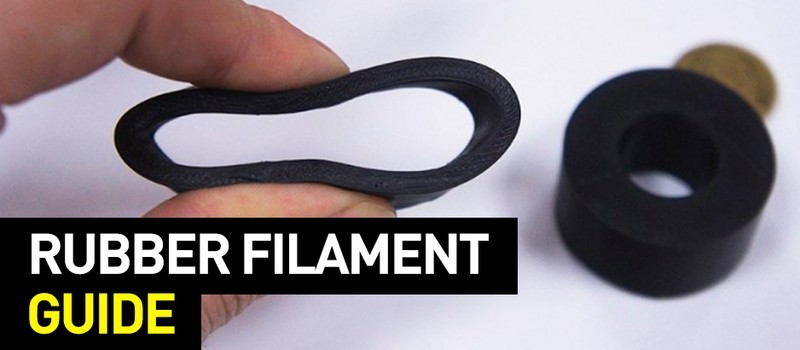
Rubber-like plastic is an elastomer that can be used to print objects with properties almost identical to those of rubber. While 3D printing with other flexible materials can be troublesome, rubber-like filament is relatively easy to work with.

Read the article to learn about the characteristics of the material and the peculiarities of "rubber 3D printing".
About rubber-like plastic

Source: researchgate.net
As 3D printing with natural rubber is not possible, rubber-like plastic becomes a great alternative due to virtually the same characteristics. (The term "rubber 3D printing" will further imply printing with rubber-like filament.) The chemical name of the material is SEBS — styrene-ethylene-butylene-styrene. It is a durable high-impact polymer. In industry, it is used mainly as an additive to other plastics in order to improve the mechanical properties of a material. Applications of SEBS are quite numerous: from additives for adhesives to the use in road construction.
The color of rubber-like plastic is black. As a rule, the material is used to create consumables: gaskets, anti-vibration pads, nubs. The advantages of rubber 3D printing include the relatively easy printer setup and the low probability of flaws, if the manufacturer's recommendations are followed.
History

Source: kraton.com
The origin of the SEBS polymer is associated with the rapid development of the oil industry in the middle of the 20th century. In the 1950s, the research unit of Shell Oil Company developed a synthetic rubber analog, an elastomer, which was commercially named Kraton. The chemical definition of the material is a styrene-butadiene-styrene tri-block copolymer (SBS). SBS is used to produce shoe soles and car tires. Over the years, modifications of SBS have been developed, including hydrogenated Kraton referred to as Kraton G (SEBS).
Properties

Rubber-like plastic is a black elastic material with good abrasion resistance, which can withstand high torsional and tensile loads. The main characteristics of the polymer are:
- Density: 0.95 g/cm³;
- Strength and flexibility;
- Resistance to dilute acids, alkalis, detergents, alcohols;
- Melting point: 225–245 °C;
- Heat resistance up to 85 °C.

The mechanical and physical properties of rubber-like plastic products resemble those of rubber. The material can be glued with synthetic caoutchouc or a heat gun. It is not suitable for contact with corrosive materials and operation at high temperatures.
Like rubber, the material is not intended for substantial mechanical processing. It is possible to correct the edges or cut the product with an ordinary craft knife. The filament exists only in black, the printed product cannot be painted.
Pros and cons

Pros and Cons
Pros:
- High tensile strength;
- Abrasion resistance;
- Simple printing process;
- Affordability.
Cons:
- Not suitable for complex mechanical treatment;
- Not suitable for being painted;
- Not suitable for food storage.
Precautions
As with any filament, rubber 3D printing causes the release of chemicals when melting the material. The vapor of a molten rubber-like filament has a minimal impact on the environment — the release of gases during printing is extremely lower than the MPC (maximum permissible concentration). The official data on the volume of discharge are as follows:
|
Component |
Emission volume, mg/m³ |
MPC, mg/m³ |
|
Methanol |
< 0.1 |
15 |
|
Acetaldehyde |
< 0.5 |
5 |
|
Formaldehyde |
< 0.25 |
0.5 |
|
Styrene |
< 0.05 |
30 |
Using rubber-like filament in 3D printing

Rubber printing is a niche task. The need for such a material emerges when 3D printing a part is preferable to buying off-the-shelf products. Such situations are possible in two cases. The first is the replacement of an element in a discontinued item, for example, replacing the leg caps of a vintage radio. The second case is printing parts for small-scale production if 3D printing turns out more affordable than ordering rubber components. Rubber-like filament is suitable for making cradles or cases for smartphones and feet for laptops, but other elastic polymers such as nylon or FLEX can also be used for such purposes.
Peculiarities of rubber 3D printing
Filament storage

Like any elastic material, rubber-like filament is capable of absorbing moisture. To maintain the original properties of the printing material, the filament spool should be stored in a vacuum bag with silica gel. If there are doubts about the storage conditions, the filament should be dried in a special device before printing — for example, the Wanhao Boxman-2.
Bed heating

For good adhesion of the first layer, the print bed should be heated to 90–110 °C. The build surface must be coated with special glue or covered with tape for PLA printing.
Print speed and parameters

Rubber 3D printing is a relatively simple process compared to that with other elastic polymers. Errors in work are practically excluded if the printing rules are followed. Print speed should be low: 20 mm/s. Retraction in the extruder must be disabled.
Cooling
When printing rubber-like filament, cooling should not be enabled.
Rubber printing problems

Rubber 3D printing is virtually the same as working with hard plastic. Although stringing (a defect also known as "web", "spaghetti" — the formation of thin plastic threads when the extruder moves from one print site to another) may occur on the resulting products, its amount is not critical and is largely due to the complexity of a part. Excess plastic threads can be removed with a box cutter.
To prevent the appearance of problematic stringing, the following steps should be taken:
- Set the print speed to a minimum — in most cases, 20 mm/s is enough.
- Make sure the filament is completely dry before printing. If there is no exact information on the storage of the material, dry the filament in a special device.
Another possible problem with resilient filament is a clogged nozzle. This can be prevented by turning off the retraction.
Samples of rubber printed products




Conclusion
Rubber-like filament is a specialized material that can be considered as an alternative to rubber. The use of the polymer is limited to cases when it is a rubber part that is needed, but for some reason, it is not possible to buy a finished product in a store or order a batch from an industrial rubber goods plant. The material cannot be regarded as an alternative to other resilient plastics since it is available only in black. Rubber-like filament looks authentic and feels exactly like ordinary rubber, repeating its mechanical properties.

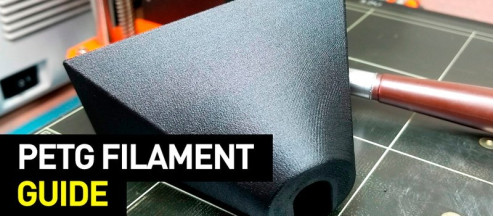
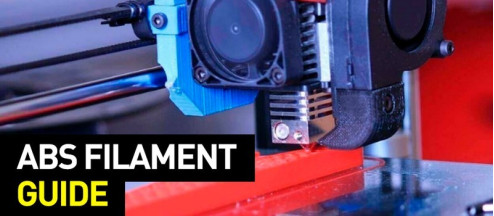
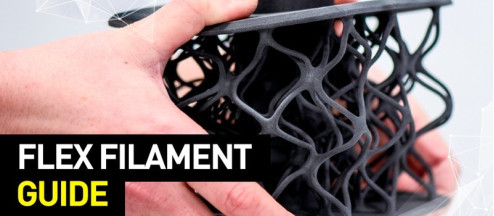
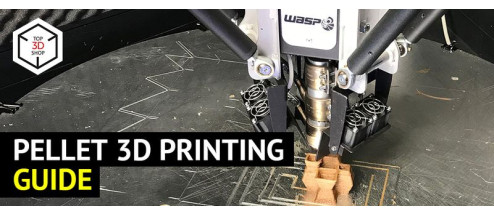
![Creality CR-5 Pro High-temp Version 3D Printer [Clearance]](https://top3dshop.com/image/cache/catalog/products/3d_printers/creality/cr_5_pro_ht/creality_cr_5_pro_ht_image10-268x192.jpg)
![Modix Big-120X V4 3D Printer [Bonus: 2-Year Warranty]](https://top3dshop.com/image/cache/catalog/products/3d_printers/modix/big_120x_v4/modix_big_120x_v4_image_16-268x192.jpg)
![Modix Big-Meter V4 3D Printer [Bonus: 2-Year Warranty]](https://top3dshop.com/image/cache/catalog/products/3d_printers/modix/big_meter_v4/modix_big_meter_v4_image_5-268x192.jpg)
Write a comment